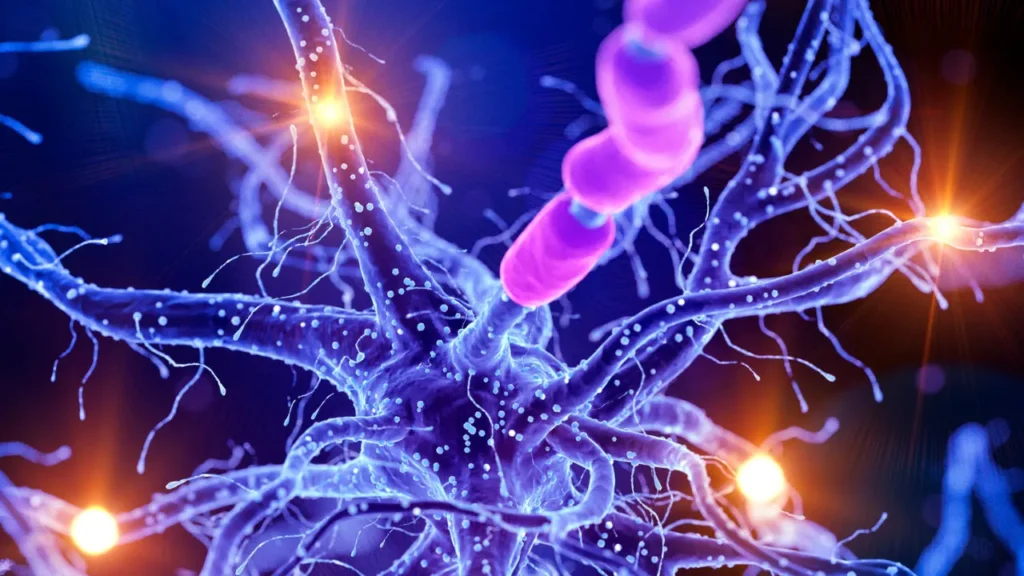The female lac bug secretes a resin called shellac from trees in the forests of India and Thailand. This resin has long been prized for use in the food and varnish industries. But recently, there has been talk about its possible nootropic advantages. This page explores the chemical makeup of shellac, its alleged health advantages, ideal dosages, adverse effects, substance interactions, and suggestions for responsible use to give a thorough overview of shellac.
You May Also Like:
Sunmed CBD vs. Partnered Process CBD: Finding the Best CBD for Sleep
Scotch Broom: Benefits, Dosage, Side Effects, Drug Interactions, And Other Important Information
Shellac: Benefits, Dosage, Side Effects, Drug Interactions, and Other Important Information is an original (NootropicsPlanet) article.
Nature of Shellac
The female lac bug (Kerria lacca) feeds on trees in the woods of India and Thailand to make shellac, a naturally occurring resin derived from insects. It is harvested, cleaned of impurities, and then used in a variety of ways, such as flakes, powder, or an alcohol solution. Its biocompatibility, appropriateness for usage in the food, pharmaceutical, and cosmetic industries, as well as its investigation as a nootropic, are attributed to its natural composition and processing techniques.
Health Benefits of Shellac
While shellac is traditionally recognized for its applications in food glazing, wood finishing, and as a pill coating in pharmaceuticals, its potential health benefits, especially regarding cognitive enhancement, are gaining interest. Here’s a detailed exploration of shellac’s health benefits:
Cognitive Enhancement
The investigation of shellac as a nootropic stems from its ability to have a positive effect on cognitive processes. While there is little direct research on the effects of shellac on cognition, two potential mechanisms include increased neuroplasticity and neurotransmitter system regulation. Because of these potential benefits for memory, alertness, and focus, shellac is a fascinating topic for additional cognitive science study.
Antioxidant Properties
It has been proposed that certain components of shellac, namely aleuritic acid, have antioxidant qualities. Free radicals, unstable chemicals that can harm cells and accelerate aging and a number of diseases, are largely neutralized by antioxidants. Shellac may have neuroprotective advantages by reducing oxidative stress, protecting neurons from harm, and enhancing brain function.
Neuroprotection
Shellac’s antioxidant properties are intimately related to its neuroprotective potential. In addition to shielding neurons from oxidative damage, shellac may also help to maintain brain health by lowering inflammation. This is especially important for cognitive functioning because learning, memory formation, and decision-making all depend on a healthy neuronal environment.
Potential Impact on Neurotransmitter Systems
It has been suggested that shellac may have an impact on neurotransmitter systems, including those involving acetylcholine, which is essential for memory and learning, though this has not been confirmed. Research on shellac’s nootropic benefits is intriguing since this substance may improve cognitive functions and mental alertness via modifying neurotransmitter levels or receptor activity.

Chemistry of Shellac
One of the things that gives shellac its special qualities is that it’s a complicated blend of polyesters and esters that occurs naturally. Aleuritic acid plays a major role in its chemical composition, which is mainly made up of resin acids and alicyclic hydroxy acids. Shellac’s solubility qualities stem from its dense network of ester connections and high molecular weight, which make it soluble in organic solvents and alkaline solutions but insoluble in water. Shellac’s solubility profile renders it adaptable for use in a variety of applications, such as food coating and medicinal capsule shells. The complex chemical composition of shellac, which includes butolic and shellolic acids, influences its physiological effects and enhances its potential biological activity.
Physiological Mechanism of Action of Shellac
Given the current dearth of actual scientific research on shellac’s activity within the brain, the physiological mechanism by which it might exert nootropic effects is complex and poorly understood. The bioactive ingredients in shellac, such as aleuritic acid, are thought to have the ability to influence neurotransmitter systems, improve neuroplasticity, and provide neuroprotection against oxidative stress through their interactions with the central nervous system. These interactions may have an impact on neurotransmitter synthesis, release, or reuptake, which may have an impact on cognitive processes including memory, focus, and alertness. Acetylcholine is a neurotransmitter that is essential for learning and memory.
Furthermore, the antioxidant qualities of the ingredients in shellac may help shield brain tissue from harm brought on by free radicals, hence promoting cognitive function. This theoretical method of action implies that shellac may affect brain activity in a way that promotes cognitive enhancement due to its distinct chemical makeup; therefore, more research is necessary to determine the precise effects of shellac.

Optimal Dosage of Shellac
It is difficult to determine the ideal dosage of shellac for nootropic purposes because there aren’t enough clinical trials that concentrate on the substance’s cognitive-enhancing benefits. The dosage of shellac in traditional applications varies greatly depending on the use. It is crucial to dose nootropics carefully, starting with small amounts and then increasing to determine personal tolerance and effect. For safety and effectiveness, speaking with medical specialists is advised prior to using shellac or any supplement in a routine.
Side Effects of Shellac
Shellac has the same potential for negative effects as any other substance. When used in food preparation, it is generally considered safe for eating; nevertheless, using it as a nootropic supplement carries some danger, particularly when using greater dosages. Gastrointestinal issues, allergic responses, or problems absorbing nutrients are examples of potential adverse effects. There is still much to learn about the long-term implications of taking supplemental shellac, which highlights the need for prudence and expert advice.

Potential Substance Interactions with Shellac
More research is needed in the field of shellac’s interactions with other chemicals, including drugs and other supplements. Because of its intricate chemical makeup, shellac may affect how some medications are metabolized, changing their effectiveness or raising the possibility of side effects. Healthcare professionals should be consulted by anyone using medication or other supplements in order to determine the likelihood of interactions and to guarantee safe use.
Best Responsible Use of Shellac
More research is needed in the field of shellac’s interactions with other chemicals, including drugs and other supplements. Because of its intricate chemical makeup, shellac may affect how some medications are metabolized, changing their effectiveness or raising the possibility of side effects. Healthcare professionals should be consulted by anyone using medication or other supplements in order to determine the likelihood of interactions and to guarantee safe use.
Shellac:
Conclusion
In conclusion, Shellac is a natural resin secreted by the lac bug. It has been used in the food industry for product appearance and stability. The exploration of its nootropic properties shows that Shellac can increase neuroplasticity and the regulation of the neurotransmitter system. A notable chemical component of shellac is aleuritic acid which shows neuroprotective ability because it can reduce oxidative stress. These effects can lead to better brain processing power such as improved memory and focus.
You must take caution when beginning shellac supplementation. Even though it is safe to consume, certain people might develop allergic reactions or other gastrointestinal issues. Since research on the health effects and safety of shellac supplementation is limited, you need to seek a doctor’s advice to determine the ideal dosage for you. You can also assess the potential risks and benefits of taking the supplement based on your specific needs.

References:
- Unraveling The Potential of Insects For Medicinal Purposes – A Comprehensive Review. Retrieved from: https://www.ncbi.nlm.nih.gov/pmc/articles/PMC10189416/
- Antiobesity Effects of Seedlac and Shellac in Rats Fed with A High-Fat Diet. Retrieved from: https://www.ncbi.nlm.nih.gov/pmc/articles/PMC7053287/
- A Minireview of The Medicinal and Edible Insects from The Traditional Chinese Medicine (TCM). Retrieved from: https://www.frontiersin.org/journals/pharmacology/articles/10.3389/fphar.2023.1125600/full
Important Note: The information contained in this article is for general informational purposes only, and should not be construed as health or medical advice, nor is it intended to diagnose, prevent, treat, or cure any disease or health condition. Before embarking on any diet, fitness regimen, or program of nutritional supplementation, it is advisable to consult your healthcare professional in order to determine its safety and probable efficacy in terms of your individual state of health.
Regarding Nutritional Supplements Or Other Non-Prescription Health Products: If any nutritional supplements or other non-prescription health products are mentioned in the foregoing article, any claims or statements made about them have not been evaluated by the U.S. Food and Drug Administration, and such nutritional supplements or other health products are not intended to diagnose, treat, cure, or prevent any disease.


